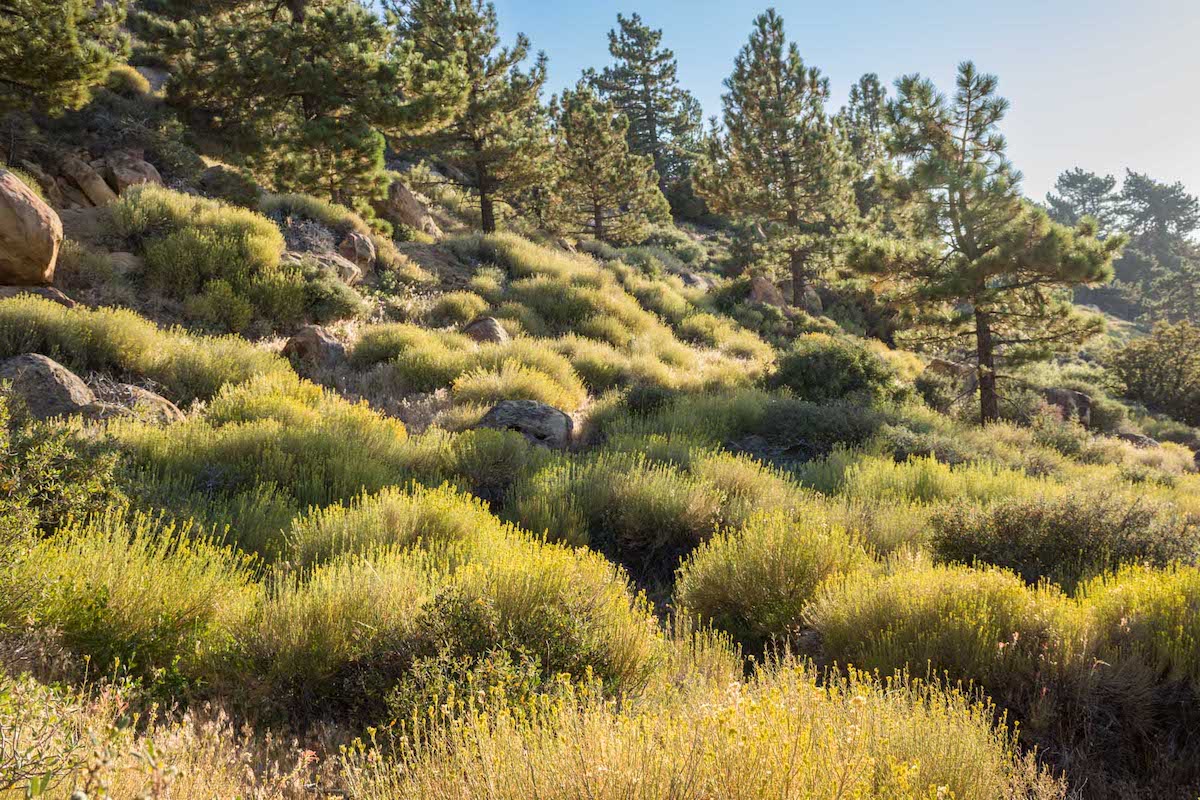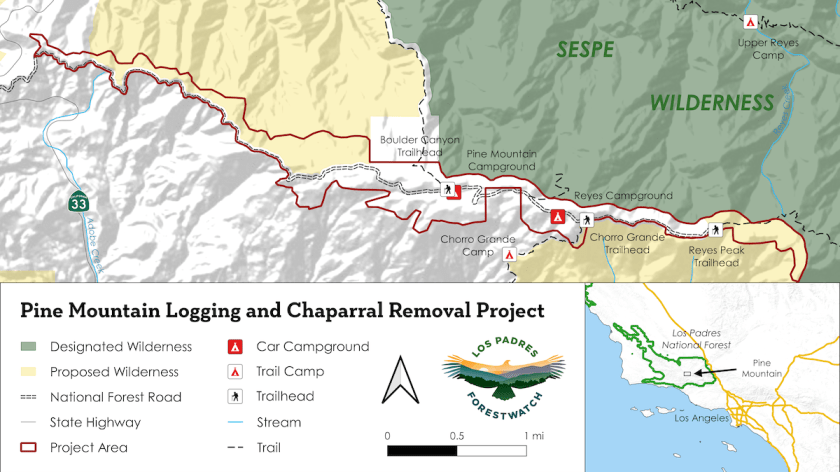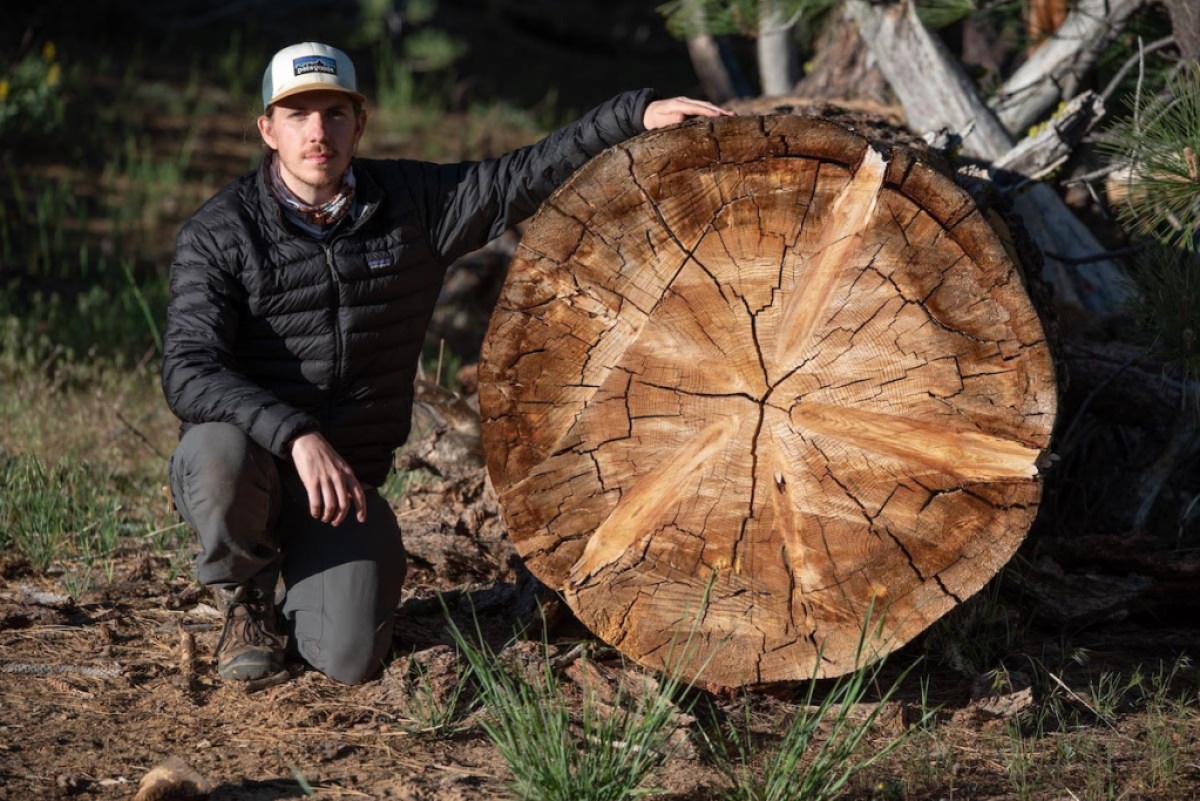Tree-Thinning Project on Pine Mountain Heavily Opposed
Ojai, Ventura County, and Environmental Groups File Suit Against Forest Service Fuel Break Plan

A plan by the U.S. Forest Service to create a five-mile long fuel break along a ridgeline about 16 miles north of Ojai — as the crow flies — has come under a challenge from environmental organizations, two public interest law firms, the City of Ojai, and the County of Ventura. They charge the plan will remove trees up to 64 inches in diameter and old-growth chaparral, vegetation in use by California condors and other endangered, threatened, or sensitive species. The project will essentially harvest large, old, and smaller trees, opponents charge.
Called the Reyes Peak project, the Forest Service states a fuel break would thin stands of trees — mostly pine — which are too numerous for the amount of water available, and also remove ladder fuels among the pines, and chaparral in stands of oak trees. Some of the pine trees are infested or at risk of infestation by the boring beetles that have killed millions of pines in the state.
But the Forest Service received about 16,000 comments on the project, “over ninety-nine percent in opposition,” according to the complaints filed in the Central District Court by project opponents. Reyes Peak straddles Pine Mountain, about a 40-mile drive up Highway 33 from Ojai. It’s a remote area very popular with hikers and campers for its trails, views, picnic benches, and occasional snowfall. Three wilderness areas — the Sespe, Matilija, and Dick Smith — surround it in Los Padres National Forest, and the area may become wilderness if the Central Coast Heritage Protection Act passes the Senate.

The Patagonia outdoor company is among the plaintiffs in the case. Hans Cole, head of environmental activism for Patagonia, noted the area is 90 minutes from their Ventura headquarters in a press release and commented, “The area is important to our employees and customers because of its outdoor recreation opportunities including rock climbing, hiking, and camping.”
The Forest Service nonetheless approved the 755-acre project in September, based on a categorical exclusion in the National Environmental Policy Act (NEPA) that allows thinning and burning for fire hazard reduction and forest health.
The opponents disagree such an exclusion applies. “The NEPA exclusion is only for truly insignificant projects,” said Maggie Hall, senior counsel with the Environmental Defense Center, which is representing Los Padres ForestWatch, Keep Sespe Wild Committee, Earth Island Institute, and American Alpine Club in the lawsuit. The exclusion was originally for small maintenance projects, like painting a building.
For an area designated “roadless,” a category into which 41 percent of the project falls, only trees of a small diameter can be removed. “This project would remove an unlimited number of large trees based on the dwarf mistletoe justification,” said Hall. Dwarf mistletoe is a parasite for conifers, but also happens to be native to the area, which holds mostly Jeffrey pine, Sierra Nevada mixed conifers, and white pine. A pine badly infested with mistletoe can become weaker and fall prey to beetles.
When it comes to mistletoe on very large trees, the Forest Service intends only to remove the trees that are hazards or in danger of becoming a hazard, said Greg Thompson, project manager for the Forest Service. These would be dead or dying trees near campsites, trails, or roads, he said. The Forest Service took up this project after repeatedly putting in dozer lines during a series of fires in the area, Thompson said, the Day, Zaca, Pine, and Thomas. “We could do the analysis after the fact — after we put in the emergency dozer lines — or analyze it as a shaded fuel break. We decided to analyze it,” he said.
The protected users of the area aren’t limited to animals like the California condor, spotted owl, or sensitive plants like the Mt. Pinos larkspur or Tehachapi monardella. The Chumash people call the mountain “Opnow,” and as one of the highest points in the area, Pine Mountain has spiritual and religious significance. Medicinal plants grow and are gathered there, and the area remains a cultural site and ceremonial spot, numerous comment letters stated.

The closest “town” to the fuel break project is Camp Scheideck — about three miles distant. It could be argued the community, founded in 1888 by German immigrants, gains protection from the fuel break, and the Forest Service notes that. But it apparently had all of nine residents in 1992, according to Wikipedia.
For the town of Ojai, population 7,613, the project as conceived would have negative consequences. “The city filed the suit to protect its surrounding ecosystem and environment, particularly its larger watershed, from unwarranted destruction,” City Attorney Matthew Summers told the Independent. He called the logging project “poorly conceived and inadequately assessed” and also “unlawfully approved without compliance with applicable federal environmental and forest management laws.”
An earlier project to establish a fuel break to the northeast of this one, the Tecuya Ridge and Cuddy Valley project, was approved by the district ranger in 2018, immediately challenged, and resolved against the Forest Service in 2022. Given that timeline, any logging up on Pine Mountain is likely a few years off.
Support the Santa Barbara Independent through a long-term or a single contribution.




You must be logged in to post a comment.